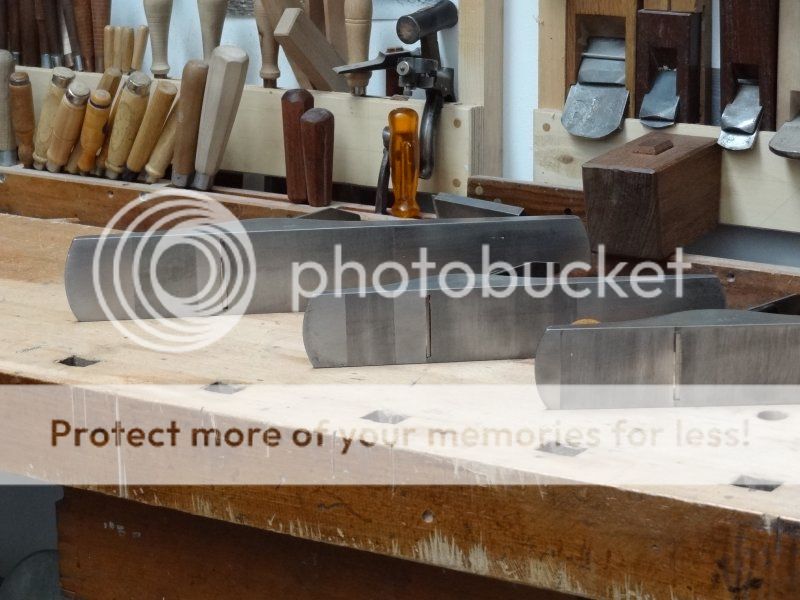Dissolve
Established Member
Hi,
I just purchased a damaged No 7 Jointer plane from Rutlands, It had a scuff at the end of the sole which was quickly removed with a very light file and touch with some 1000 grit wet and dry.. That has no bearing on what I'm questioning.
I'm using my bevel edge straight edge (This is straight, it's been checked recently against a very reliable surface plate) to check the sole and it seems to have a bit of a belly near the center of the sole. It's only very slight, but I would much rather have a slight hollow to lap than a bump, how much is acceptable? The plane was labelled as being brand new aside from the scuff on the toe, so if I measure it with feeler gauges and it turns out to be unacceptable I dare say I'll have a delightful exchange with them next week!
What would you guys consider an acceptable tolerance?
I just purchased a damaged No 7 Jointer plane from Rutlands, It had a scuff at the end of the sole which was quickly removed with a very light file and touch with some 1000 grit wet and dry.. That has no bearing on what I'm questioning.
I'm using my bevel edge straight edge (This is straight, it's been checked recently against a very reliable surface plate) to check the sole and it seems to have a bit of a belly near the center of the sole. It's only very slight, but I would much rather have a slight hollow to lap than a bump, how much is acceptable? The plane was labelled as being brand new aside from the scuff on the toe, so if I measure it with feeler gauges and it turns out to be unacceptable I dare say I'll have a delightful exchange with them next week!
What would you guys consider an acceptable tolerance?


































